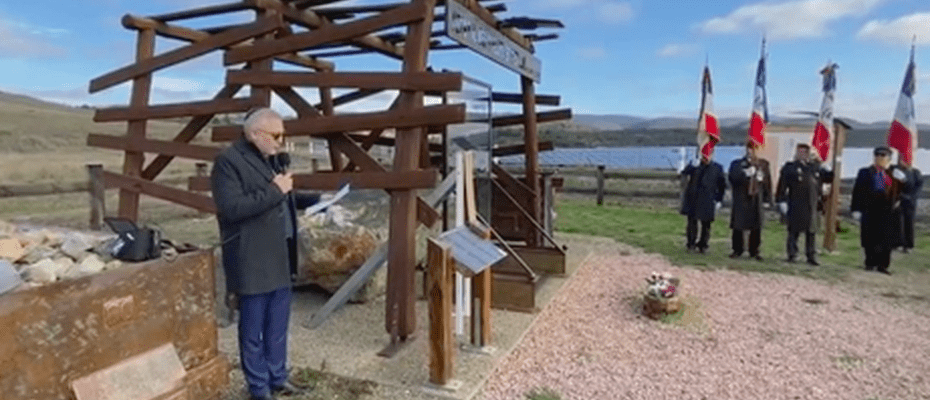A ceremony honored, Wednesday, at the Montagne Noire miners’ memorial in Aude, thirteen Jews deported in 1944, all former workers in the Salsigne gold mines. Their story, forgotten after the war, was brought to light by individuals.
It took eighty years to bring them out of oblivion. On January 31, a ceremony honored thirteen Jews deported in 1944, all former workers in the Salsigne gold mines, in Aude.
Coming from Eastern Europe to flee Nazism, they had been employed by the Vichy regime in these gold mines, in the heart of the Montagne Noire region. Denounced and rounded up on January 31, 1944 at their workplace, they were deported in February of the same year to the Auschwitz extermination camp, in Poland. Only one of them came back.
Since then, their story had been forgotten. This ceremony, held at the Black Mountain miners’ memorial in Salsigne, repairs this oversight. Around fifty people were present, including representatives of the Narbonne Jewish Culture and Heritage association.
The story of these deported Jewish miners was rediscovered by Frédéric Ogé and Robert Montagnié, two retirees and residents of Salsigne. The first is a former researcher in history at the CNRS and the second is a former miner, retired since the closure of the Salsigne site in 2004. The two are neighbors, and when Frédéric Ogé discovered in 2019 a blog post which recounts the history deportees from Salsigne, they decided together to go and decorate the memorial to the miners of the Montagne Noire every year in their honor.
This Wednesday, January 31, 2024, 80 years to the day after the roundup, the names of the thirteen deportees were added to a plaque on the miners’ memorial, which honors the site workers who died in combat or at work. “Those who are commemorated today, of course, did not die in combat, they died in the gas chambers, but they believed in France and they thought they would be protected by France. And unfortunately, that wasn’t the case.“, states Frédéric Ogé. “We pay tribute to the miners, to all the miners, and these should not be forgotten“, adds Robert Montagnié.
The blog post discovered by Frédéric Ogé, published in 2016, was written by Martial Andrieu, author of several works on the history of the Carcassonne region. The latter relates, after having exhumed it from the departmental archives of Aude, the testimony of Mayer Stern, the only survivor of the Salsigne roundup, during the trial for assassination and treason, in 1945, of René Bach, a French agent of the Gestapo having participated in the arrests of the Jews of Aude.
Having just returned from Auschwitz, Mayer Stern testified at the Aude Assize Court. Martial Andrieu reports his comments on his blog: “A German commander, six soldiers and a man named Bach came with a truck and a sedan. We were placed in the truck and we were all taken to the Carcassonne barracks“. This was followed by deportation to Poland by convoy 68 from Drancy.
From now on, the commemorative plaque ensures that this episode will not be forgotten. It permanently inscribes the names of the thirteen deportees from Salsigne: Joseph Coifman, Mathias Gartner, Max Gold, Jacques Harth, Carl Kampelmacher, Chaïm Rawicki, Robert Grün, Tibor Jaeger, Ladislas Knopf, David Goldstein, Louis Kantorowitz, Leopold Schloss and Mayer Stern.
